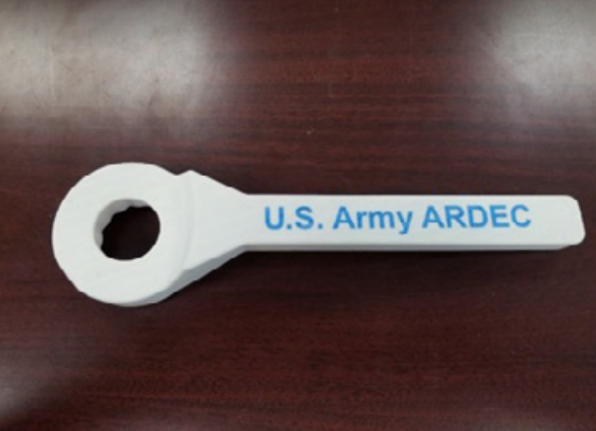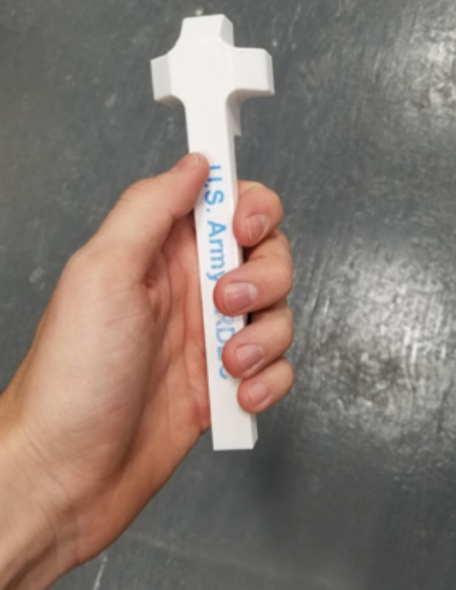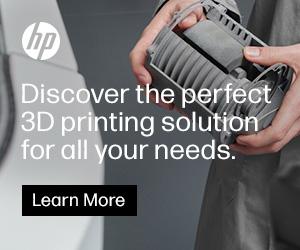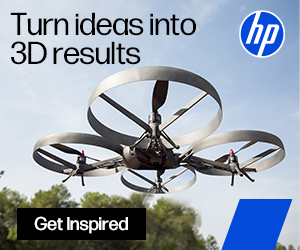Army Research Groups Explore 3D Printing for Soldiers In the Field
 The United States Army Armament Research, Development and Engineering Center (ARDEC) at Picatinny Arsenal in New Jersey serves as the main R&D group for the U.S. Army armament and munitions systems. There, personnel continue to specialize in material property innovation, along with developing advanced technology. It makes perfect sense that they would branch out into additive manufacturing processes and further study of materials that would fit in with needs for the military.
The United States Army Armament Research, Development and Engineering Center (ARDEC) at Picatinny Arsenal in New Jersey serves as the main R&D group for the U.S. Army armament and munitions systems. There, personnel continue to specialize in material property innovation, along with developing advanced technology. It makes perfect sense that they would branch out into additive manufacturing processes and further study of materials that would fit in with needs for the military.
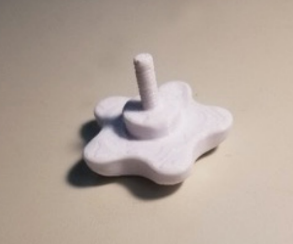 Currently, ARDEC houses 25 3D printers of varying types. Matthew Brauer, scientist for the Advanced Materials Branch of ARDEC, states that currently they are using everything from compact desktop machines in the $500 range to industrial size additive manufacturing equipment that costs over $500,000. The goal is for such processes to be available to soldiers in the field when they need to make parts right way, either as replacements or for general maintenance.
Currently, ARDEC houses 25 3D printers of varying types. Matthew Brauer, scientist for the Advanced Materials Branch of ARDEC, states that currently they are using everything from compact desktop machines in the $500 range to industrial size additive manufacturing equipment that costs over $500,000. The goal is for such processes to be available to soldiers in the field when they need to make parts right way, either as replacements or for general maintenance.
The hardware has to be reliable, streamlined and user-friendly, as well as safe and durable for what can be rigorous conditions. Any 3D printers used by the military must also comply with performance requirements, along with rigid regulations for storing and disposing of waste materials—and this can vary by country.
The Rize hybrid augmented deposition process offers multiple benefits to not only ARDEC but also the Advanced Materials & Technology Branch within ARDEC. Printing is performed through extrusion of thermoplastics and the jetting of inks.
“It’s easy to peel away supports from intricate geometries, and that provides a faster part in the soldier’s hand,” said Matthew Brauer, Scientist, Advanced Materials Branch of ARDEC.
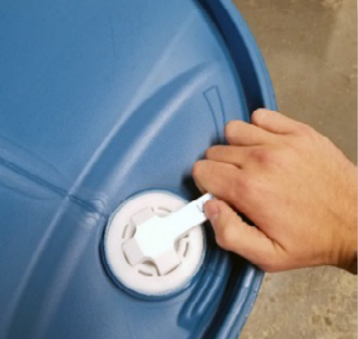 James Zunino, Materials Engineer at ARDEC, also adds that less post-processing is highly desirable in areas where there simply isn’t enough water for exercises like post-processing in 3D printing.
James Zunino, Materials Engineer at ARDEC, also adds that less post-processing is highly desirable in areas where there simply isn’t enough water for exercises like post-processing in 3D printing.
On-demand parts and tools are produced affordably and quickly on the Rize One 3D printer. More importantly though, the parts are strong and durable for fabrication of parts like wheels for robotics and parts for military vehicles. The Rize case study offers the example of Humvee window knobs and handles that can break easily, making entering and exiting difficult. With the Rize One, engineers at ARDEC were able to make new handles, and at rapid speed—with the parts ready for immediate installation, saving hours of time from previous processes.
“A system can go down because of one missing part and something like 3D printing can get you back in the fight,” says Zunino. “That’s a huge benefit to the Army. If a handle is broken on purge pump or wheel is damaged on an EOD robot, you can print a new one.”
ARDEC is also using the Rize One for creating many specialized tools needed in the field, like special apparatus for opening 55-gallon drums, as well as other basic items like wrenches, created with modeling programs like SolidWorks. Weapons can also be repaired and maintained, along with the creation of parts as ARDEC engineers download files, customize them, and 3D print.
Nearly all divisions of the military, from the Army to the Marines to the Navy—along with famed aerospace organizations such as NASA—have been enjoying the benefits of 3D printing for decades, and they continue to use progressive technology to improve mission-critical applications for soldiers who are often in remote locations.
What do you think of this news? Let us know your thoughts! Join the discussion of this and other 3D printing topics at 3DPrintBoard.com.
[Source / Images: Rize Case Study sent to 3DPrint.com]Subscribe to Our Email Newsletter
Stay up-to-date on all the latest news from the 3D printing industry and receive information and offers from third party vendors.
Print Services
You May Also Like
3DPOD 248: AM in the Marines and Advanced Technologies with Howie Marotto, EWI
I really loved this episode of the 3DPOD with Howie Marotto, Additive Manufacturing Business Director at EWI. A Marine with deep logistics experience gets to tell us how viable 3D...
Printing Money Episode 27: Q4 2024 Public 3D Printing Earnings Review with Troy Jensen, Cantor Fitzgerald
Q2 2025 has already begun, but public markets reporting has only just finished with Q4 2024. To tie a bow on Q4 2024, we are thankful to have Troy Jensen...
3DPOD 247: LJ Holmes, Executive Director for the Center of Advanced Manufacturing and Materials at Harrisburg University
Executive Director for the Center of Advanced Manufacturing and Materials at Harrisburg University, Larry “LJ” Holmes is a pioneer in applying additive manufacturing to defense and other critical sectors. Part...
3DPOD 246: 3D Printing at Oechsler, with Andreas Knoechel
Andreas Knoechel, Head of Program Management for Additive Manufacturing at Oechsler, is doing some real heavy lifting in production. German plastics manufacturer Oechsler was the pioneer behind 3D-printed shoes at...


